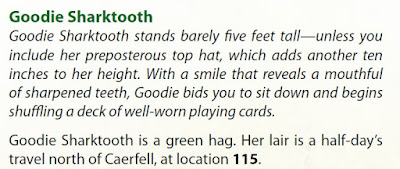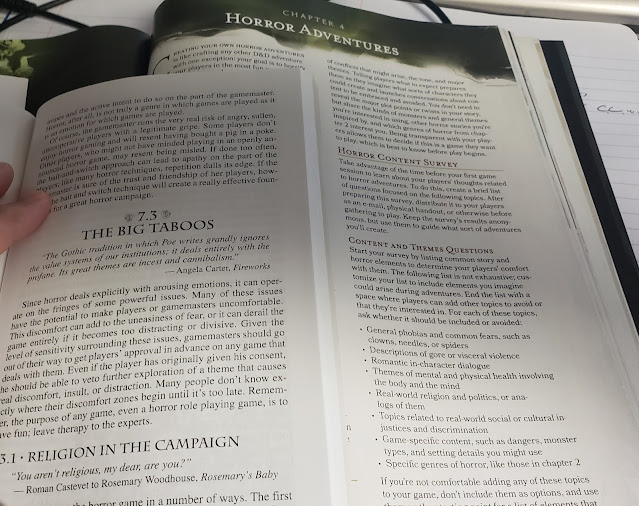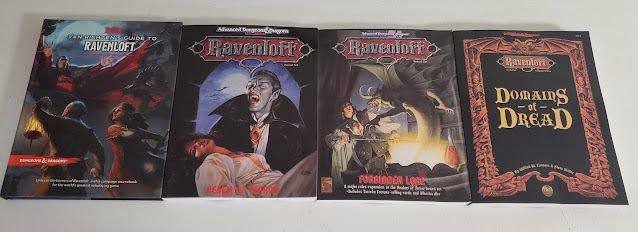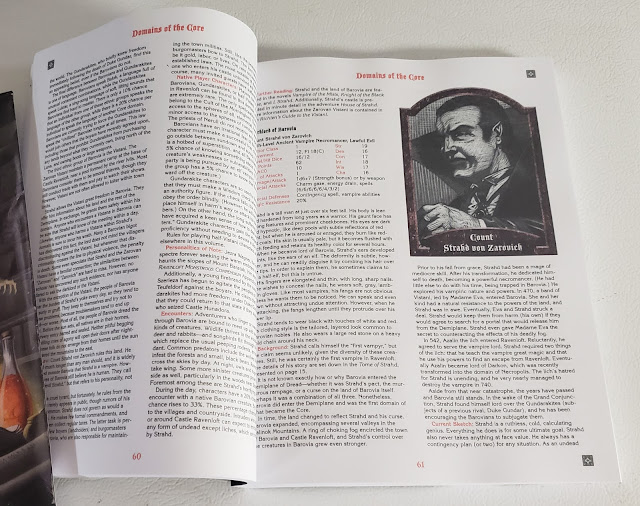Putting the Hex into hex crawls.
A while back I mentioned the Runewild Campaign Setting Kickstarter. I was quite excited about it and happily backed it. I got my books and my PDFs, but it was in the middle of my Covid-19 fueled busy summer last year. The book has been sitting on my desk, mostly ignored since then.
That is a damn shame.
With all the fun I have been having with Van Richten Guide to Ravenloft lately I wanted to revisit this book and see what I can add to it from this book. The short answer? A lot. So much in fact that while there are some great ideas in this book for Ravenloft, there is a TON more for my War of the Witch Queens campaign for Basic-era (B/X, BECMI, OSE) D&D.
So for this review, I am going to refer to both the Softcover print and the PDF.
Published by Sneak Attack Press, written by William Fischer, art by Joyce Maureira, and Cartography by Toy Fayen. 306 pages. Full-color covers and interior art. Available in PDF, Hardcover, and Softcover versions. For 5th Edition, recommended levels are 1 to 10. Available on DriveThruRPG and at your FLGS.
The PDF is fully bookmarked with hyperlinked Table of Contents.
The Runewild Campaign Setting (Runewild) is overtly a "Dark Fantasy fairy tale" campaign sandbox guide and a hex crawl in one volume. That is it in a nutshell but does not really do it justice. Best to break it up a little more.
From the introduction,
This book includes:
- A history of the Runewild and its surrounding settlements
- 150 detailed encounter areas for player characters to explore
- 8 new Backgrounds and a new Feat: Fey-Touched
- 21 unique magic items (like witch embers and the staff of clarity and confusion)
- 32 new monsters (including clockwork dwarves, fey lions, giant forest sloths, and the terrifyingly beautiful Golden Bodach)
- Detailed descriptions of the histories, motivations, and weaknesses of the witches of the Runewild, including the Whitebone Sisters; Missus Switch, the swine hag; Korthsuva, the Witch of Hours; and the Hag Queen Griselda, Mother of Ogres
- New optional rules for exploration and resting
- Advice for running a sandbox campaign
- Dozens of random tables designed to help GMs make a Runewild campaign their own
That is quite a lot. Frankly, I was just happy getting the material on the Witches of the Runewild, the rest is gravy for me. I turn the page and suddenly my "gravy" turns into another dessert course when I am introduced to the "Witch Wars." Oh. This will be fun.
The book is split into four sections, Running the Runewild, Magic of the Runewild, A Runewild Gazeteer, A Runewild Bestiary.
Running the Runewild: This section covers what the Runewild is and a bit of its history. It also introduces the idea of a Sandbox Campaign. While many gamers of a certain age will already be familiar with the idea of a sandbox (and even where the term comes from) this might be new to the majority of younger D&D players. No inditement of their experience; everyone learns something new at different times. This is a good overview of this style of play for the newer generation of players.
The advice given about Sandboxes vs. Adventure Path is solid and there is even something here that warms the cockles of my old-school heart. To quote page 10, "e of the greatest difficulties in running a sandbox-style campaign is balancing encounters. In short, there are no balanced encounters in the Runewild." Players and Characters need to get used to the idea of running away.
While this might be a shift for some 5e players, it is not a hard or difficult one. In fact, it is presented in the light of the characters have the ultimate freedom to do what they want. It is wonderful really and to quote Darkseid from the Synder Cut of Justice League, "we will use the old ways."
The Old Ways describes Runewild to a tee.
Among the "old ways" are plenty of Random Encounter tables with brief descriptions of what is encountered. Adventure Hook tables, Scenery tables, Fey prank tables, general Runewild strangeness, random animals, random NPCs, and more. For new schoolers, this will make the area feel vibrant and alive. For new schoolers, this will feel strangely homelike. Note at this point, 30 pages in, there has been very, very little in the way of stats. An encounter with a Skeleton is listed for example, but where you look up your skeleton is up to you.
We do get into Runewild Backgrounds which are 5e backgrounds. For 5e they are great really, lots of great information here, and none of them feel overpowering (they grant a skill and a tool proficiency and usually a language) for other games, you can use the native skill system (Trained would be the equivalent in 3e, free Proficiency in AD&D 1.5) or wing it. One of my favorites is a Polymorphed Animal. You used to be a normal animal and now thanks to strange magic you are human-ish. Really fun stuff.
Magic of Runewild: This section covers some more game-specific information such as some new feats, curses, and new magic items (lots of these). But the star attraction of this section has to be the Goblin Market. There is so much here and frankly, they could have published this on its own and it would have been a great seller. There are random tables of trinkets, goblin charms, treasures, and of course a list of vendors and encounters.
 |
| “We must not look at goblin men, We must not buy their fruits: Who knows upon what soil they fed Their hungry thirsty roots?” |
One thing that I felt was missing from this section? Spells. There are no new spells here.
A Runewild Gazetteer. This starts out with the hex maps of the Runewild. Numbered just like all old-school hex maps too! The hex encounters are then detailed throughout the chapter with a corresponding Challenge Rating. An improvement from older Hex crawls to be sure. So yeah the party of first-level characters can enter a CR 0 hex with no problem and come out ok. They can also enter into a CR 10 hex with the same level of difficulty (that is, none at all) but they are not going to leave it as easily! That's a hex crawl. There are no signs saying "You Must Be Level 5 or higher to Enter" if the player goes there, then their characters will pay the price.
Each hex of course has different levels of detail, but they are all given some quick bullet points to help the DM out. For example:
2. The Last Tower (CR 4)
- A ghost haunts the tower
- Ten giant rats feast on bandit corpses in the tower’s basement
- The bandits carried stolen treasure
Then more details follow. NPCs are noted ad are monsters. There are maps where needed (even a player's map in a few cases!) and yes more random tables. There are 150 such encounter areas and it covers a little over 200 pages. Some encounters are a paragraph or so, others are multiple pages.
A Runewild Bestiary: Now you know I love this section. There are over 30 new monsters, monster variants, and (and this is my favorite) listings of The Witches of Runewild. This includes a bunch of various witches (mostly hags), new types of hags, and the two major and one minor covens. Again, if they had sold this separately I would have scooped it up the moment it hit DriveThru.
Here is an example of one of the witches.
There is no Witch Class. Part of me is disappointed, but another part is happy since I can now do what I want with them.
The chapter and book ends with Monster Variants.
The art in this book is quite great and helps give the proper mood for this dark fairy tale land.
Using this with Basic-Era D&D
The book feels like a BECMI Gazeteer. I could set this outside of Glantri and it would feel right. There are 5e stats, but not a lot. Most of the monsters have an analog in other games. For example, if you run this with say, Old School Essentials, just swap out the monsters. BTW this would work FANTASTIC with the Dolemwood products.
This is a wonderful book and resource and I am very pleased with it. My only regret with it is I wish I had picked up the Hardbound version instead!




































